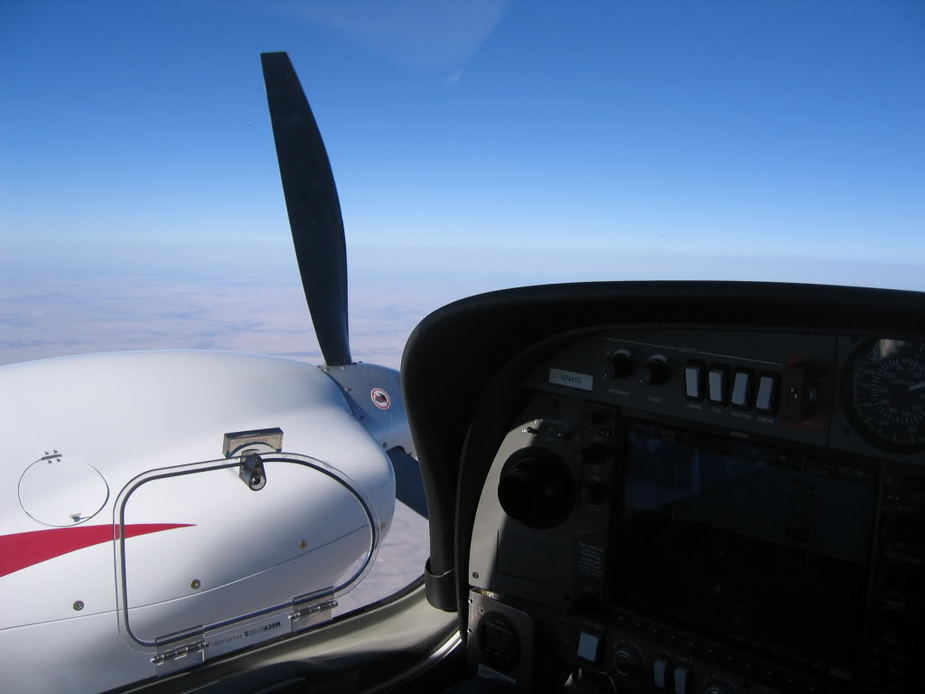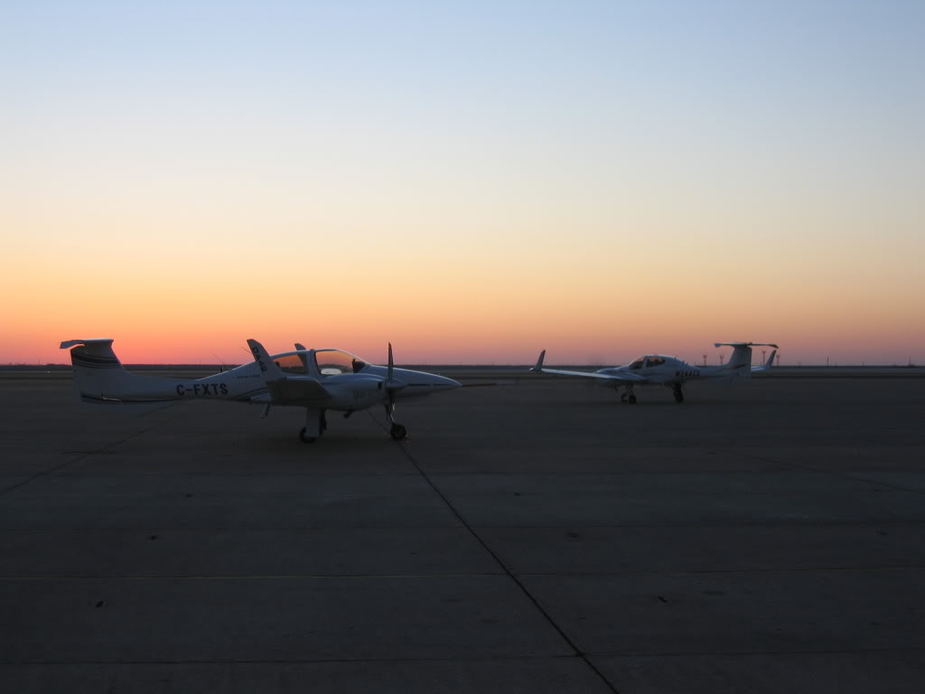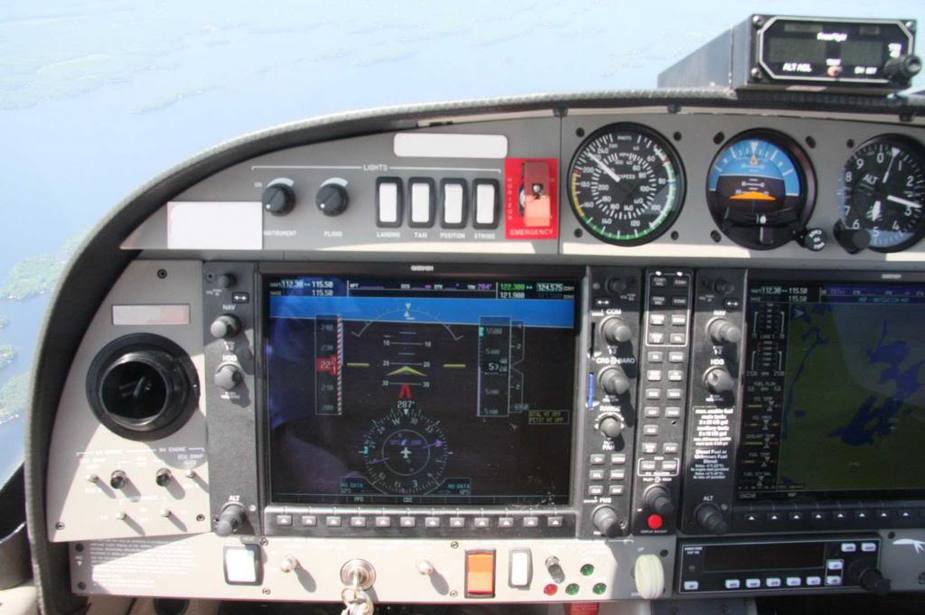I just think that in this business one needs to allow more time for stuff to get shaken out.
Peter, I know exactly where you're coming from. I thought long and hard before buying a DA42.
In a way, given my mission, budget & flying preference, my choice was already made. (regional and world touring; also I love the damn plane)
But the engine choice was absolutely key.
An acquaintance of mine runs a flight school in the US. In the early days he had three DA42 inflight emergencies with his 1.7 Thielerts, including one right after Vr but before positive rate. (the student continued the take-off anyway, and made it back in)
His experiences made the Thielerts a total no-go for me, even when he mentioned his 2.0's were much better. He's subsequently been flying the Austros for a couple of years & had zero problems so far.
Another issue with the Thielerts (which continue to this day), is the onerous semi-frequent inspections. I just didn't want to deal with sending both damned gearboxes back to Germany once every 2nd year.
The Austros weigh a lot more, but the gearbox has a TBR at 1200 hrs, which should be good for at least 6-7 years of flying. There's no clutch. The turbos are much stronger. More HPs. Higher single engine ceiling. And the whole thing looks completely overengineered; the gearbox is double the size of the Thielerts & the EECU looks MILSPEC. So at least it looks reliable! 
Finally, the DA42-VI arrived about a year ago, where they've actually shaved 40 kg off the airframe, compared to the DA42NG. So the added weight of the heavy Austros were somewhat offset. Single engine ceiling is now an astounding FL180. Finally Diamond claims to have reduced 50% of the scheduled maintenance requirements on the DA42-VI vs the DA42NG.
In the end, weighing up the alternatives (of which there were very few), I just wanted to make a decision and accept the consequences. I just didn't want to sit on the ground waiting another 5-10 years for the auto-diesel market to "settle" vs taking a risk with a 10 year old airframe design & 2.5th gen auto-diesel.
but even now consider the engines unproven long-term.
Honestly, my expectations are 10 years of reasonably trouble free operation. I don't really care if I need new engines in > 10 years time. I have no ambition to fly the same airplane for the next 25 years anyway. Also Deltahawk might finally reach certification in 2025, and I'd be happy to replace the Austros when they're ready! 
We'll see how it all works out. I'll be happy to report back.
But in GA, owners will not wash their dirty laundry in public
I absolutely guarantee, that if the Austros start giving me any sh*t, I'll scream like a stuck pig on the forum! 
The DA 42 is a great plane, a delight to fly. It is well suited to moving people from paved runways. It certainly does what it was designed to do. I know the IO-360 and Thielert versions. I know nothing about the NG.
I did find though, that for such a high quality aircraft, there were a number of details and sub systems which were, to be direct about it, very cheap.
I was involved in certification testing of the IO-360 version of the aircraft. I flew it before I flew the diesel. That engine installation was superior (Canadian designed :). I did not realize it was better than the Thielert diesel, until I got to know the diesel during another certification program last spring. The diesel is delightfully simple, and an execellent trainer for jet pilots.
The Thielert has a few features which are simply cheap. During 8 hours of flight testing, I had two engine snags requiring maintenance - one I had to fly back to the dealer for repair. I learned that I should have called up the local Mercedes repairman instead. In 25 hours of quiet abusive testing in the IO-360 version, not a single snag.
The IO-360 power introduced a few new things to consider. As mentioned, reduced range, and power to spare. However, Vmca was a challenge. Power up from 135 HP a side to 18HP, requires lots of rudder effectiveness. It was not intended to change rudder travel. The original Vmca could not be maintained, with full rudder applied, it would not fly straight. What I found after some examination, was what I characterize as a really cheaply made rudder control circuit. Instead of swaged terminal ends for the rudder control cables, they were nicopressed, with thimbles, and there were quite a few per cable. Because the rudder bellcrank is neatly buried within the width of the rudder/fuselage, it has a short arm, which corresponds to high cable tensions. Still well within the capacity of the cable, but the thimbles were being stretched. The resulting "lengthening" of the rudder cables made it not possible to obtain full rudder travel against the higher power. It would have cost $150 in parts to have made the rudder cables properly, and much less labour than Diamond must have used. I was not involved in the design resolution of this, but I know they got it fixed.
The elevator control system has an odd electrically driven wedge to change the up travel stop based upon configuration. I have never heard what happens when this feature quits in flight. However, for the fussiness of mechanically altering the up travel by 2 degrees, I find it funny that the rigging tolerance is +-1 degree, so a correctly rigged plane cold be halfway through that changing pitch stop system's limits anyway.
I like the DA 42, and if it's oddities are within the operational requirements, the budget is there, and the owner is comfortable with the characteristics of whichever engines it has, it's a great plane.
The 360 during engine restart testing...

Morning just before 360 flight testing in Texas...

During certification dive testing with booms on the diesel...

A few weeks ago I looked fairly closely at a Thielert on an engine stand in an aircraft manufacturing faculty. It's a very complex piece of equipment and not being familiar with all the Mercedes engines and their details, I was quite surprised to see that one with a belt driven cam was selected for aircraft conversion.
A much more experienced pilot than me once told me that the beauty of piston twins is that in the event of an engine failure the good engine carries you to the crash site.
Good article, Silvaire.
One bit is curious:
Many DA42 operators called for Diamond to make them whole — either by honoring the engine manufacturer’s original warranty or by paying the cost of converting their Thielert airplanes to alternative power once those conversions were available.
While it was not obligated or able to do either of those things...
I don't believe that - for the EU. Surely, under EU consumer regs, if the plane is bought by a private buyer, the airframe and engine are both covered by the seller. Anything else would be an unfair contract.
But commercial buyers are able to sign a contract containing "unfair" clauses (e.g. a separate airframe and engine warranty), and I bet most DA42s went to commercial operators.
I personally know exactly two DA42 private owners (one is non EU, the other in a rather remote EU country) and while they like the plane they are very unhappy about the way Diamond dealt with the crisis (to which I would add that perhaps they would have been even less happy if Diamond went bust).
A much more experienced pilot than me once told me that the beauty of piston twins is that in the event of an engine failure the good engine carries you to the crash site.
I think it largely depends on how proficient one is in flying with one engine out, and on the arcraft type. But the DA42 does fly quite well on one engine.
[Here is a video](
demonstrating a DA42 with simulated Engine Failures during various phases of a takeoff.
I got this from one of the two DA42 private owners I know personally:
I don't know about the NG but the DA42 thielert/centurion looks about right. I used to get 150kts at 10 us gals per hour. Can't comment on the NG reliability but they seem to have a CG issue: There is an option to add a lead weight to the base of the fin.
A much more experienced pilot than me once told me that the beauty of piston twins is that in the event of an engine failure the good engine carries you to the crash site.
It is certainly true that twin engine safety is not a clear cut winner versus single engine particularly in the EFATO situation.
That said, if I was trying to lower my risk in a piston, I would take a twin.
But you can see my view on the absolute risk of a well maintained single in that I bought one.
I would still take a single-engined turboprob over a piston twin for reliability.
I think that had there been a nice modern proven-engine twin say 8-10 years ago, I would now be flying that.
You get - in the right type of twin - a decent systems redundancy, plus of course the spare motor.
But all I saw kicking around were totally shagged old wrecks, which cost a fortune to fuel and - due to their condition - an even bigger fortune to maintain. £20k annuals are not that unusual.
There seems to be a sizeable twin piston private owner community which runs their planes at a minimal level of maintenance; in some cases openly so "because I have a spare engine".
Most of those used for ME or IR training by FTOs are fine examples of how shagged a plane can be and still get the release to service signed off 
But obviously a piston twin doesn't have to be like that. The slickest smoothest plane I have ever flown in was a 421C which was rebuilt in a money-no-object manner by a pilot who had great attention to detail, and the time to project-manage it. It went like a train, and he achieved a 49/50 despatch rate over a 12 month period, on long flights to e.g. Italy.
The problem for me is that - pre-Diamond - the choice in piston twins has been poor for many years. Only a few have been in production, and none of those could be remotely described as modern. They are 1950s hulls, mostly, and they look it. No wonder that the SE market is where the new money went into. The traditionalists won't like this, but to create new demand you nowadays have to deliver a nice looking modern product (hence Cirrus, etc).
I can see why the 421C pilot did what he did. It was the only way to get a twin and get it to his high standard. But very few people have the expertise to manage such a project. Certainly VERY few maintenance companies can be given an old wreck and do it up to such a high standard, on their own. I could manage it today, easily, but could not have done it in the early days.
Also a 421C does give you a superb combination of range, capability, and payload. It's not far behind a TBM, though a TBM will have the edge at RVSM altitudes.
Diamond had a chance to completely re-create the twin market, and they still have that chance, but IMHO they need to prove themselves - much more than they had to prove themselves when the DA42 came out. They also need to demonstrate to their existing and potential customers that their occassionally atrocious customer service has been sorted.
I would still take a single-engined turboprob over a piston twin for reliability.
So would I, but the cost increment is pretty big, due to the PT6. The obvious options are a Jetprop, and then a used TBM which isn't much more but costs a lot more to run due to Socata's maintenance schedule. I know of people who run a TBM on a flat rate maintenance of about £40k/year, plus all flying related costs. A mid-engine-life TBM700 is now about $1.3M.
Actually I agree. In fact when I was looking around last year I did toy with the idea of a twin. But of course there was nothing remotely modern or at least nice to consider. Everything I looked at was completely clapped out.
421Cs were great and on paper still are. I just haven't seen a nice one in years.